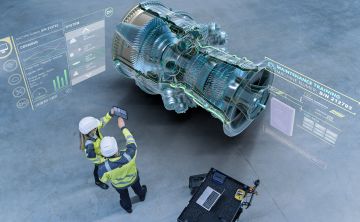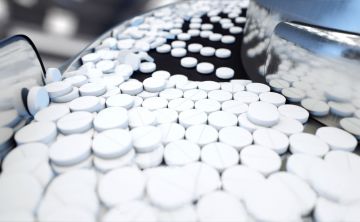Environmental impact: how composite materials are becoming essential in the aeronautics industry?
Interview with Jérémy Crevel, head of the test laboratories at Daher, on the field of composite structures applied to the aeronautical sector.
Jérémy Crevel is in charge of the test laboratories at Daher, a 1st tier subcontractor to Airbus. One of his responsibilities is the management of the laboratories on 4 sites (2 in France, 1 in Mexico and 1 in Morocco). He is an expert in the field of injected thermoplastic materials, on which he did his thesis at the Clément Ader Institute-Albi UMR CNRS 5312.
The field of composite structures applied to the aerospace sector is taught in the advanced master AMPAS – Advanced Manufacturing Processes for Aeronautical Structures.
What are the main composites used in aeronautical construction?
In recent years, we have seen two types of composite play an increasing role in the manufacture of aircraft structures: thermosetting resin composites (mainly carbon fibers and epoxy resins) and thermoplastic composites for which the matrix is mainly made of PAEK (Polyaryletherketone). Easy to use and lighter than the metal commonly used until now, these two types of composite significantly reduce the weight of airplanes, resulting in reduced fuel consumption and a positive impact on the environment.
BMI (Polybismaleimide)-type resins, another material currently under development, are also used in certain cases to replace phenolic resins. However, aircraft construction has a long timescale when it comes to replacing its traditional materials. The process of developing, certifying and qualifying a new material is long and expensive. It lasts between 1 and 2 years, and represents a minimum cost of € 500,000. The manufacturer has an obligation to guarantee the functionality of the material and the barriers to market access are high.
What are the most promising developments in the field of composites?
Today, research into thermoplastic matrix composites is booming, and major contractors, such as Airbus or Boeing, are working on integrating this material into their structures. There are two reasons why these composites are so attractive. First and foremost is the ability of the thermoplastic to increase the overall sustainability of the material, because it is easily recyclable. For example, if it is originally used to make class 1 parts, it can then be re-melted and reused to make parts of class 2 or 3. Although it can only be reused to make a lower class part, the fact that it can be recycled is a determining factor today. Another advantage of thermoplastic is the potential it offers to be welded when it is heated. Today, composite parts are fixed with rivets after drilling. A real challenge today is therefore to convince designers of the potential for welding and that the use of rivets is not essential. Research is underway to develop a bonding and/or welding process that will do away with riveting.
What are the obstacles to their generalization in aircraft construction?
Reparability is one obstacle, and this applies to all composites in general. When a metal structure receives a shock, it does not have the same impact as on a composite structure. To repair the metal structure, simply rivet a piece of sheet metal over the damaged area. However, the layered composition of the composite requires delamination and sanding of the damaged area followed by the application of a patch. This aspect is giving rise to certain reservations on the part of manufacturers. Another obstacle to the generalization of composite materials is that they cannot be used in so-called hot zones (the area around the engine, for example). These hot zones require the application of more complex resins (ceramics) or the use of metal. Finally, the development of thermoplastics is confronted with the high cost of their manufacturing process, which is carried out at very high temperature: 180 ° C and 7 bars of pressure for thermosets, or 400 ° C and > 7 bars of pressure for thermoplastics. The only way to reach these temperature levels is to use autoclaves, which are particularly expensive: around € 500,000.
Are there any prospects for changing this manufacturing process?
New developments are underway on thermosetting resins, in particular epoxy. Their potential is leading us to increase our knowledge of processes such as OOA (Out Of Autoclave) to avoid manufacturing with in an autoclave. The autoclave could be replaced by an oven, a sort of large, ventilated chamber. The cost of this type of oven is ten times lower. A study is also underway to recover the waste offcuts associated with plate cutting for thermocompression, by grinding them and then injecting them for other parts. Additive manufacturing is also on the agenda for the manufacture of various parts with complex topologies. These developments are really important. They are factors in "design to cost" analysis, which is essential to the issue of competitiveness.


